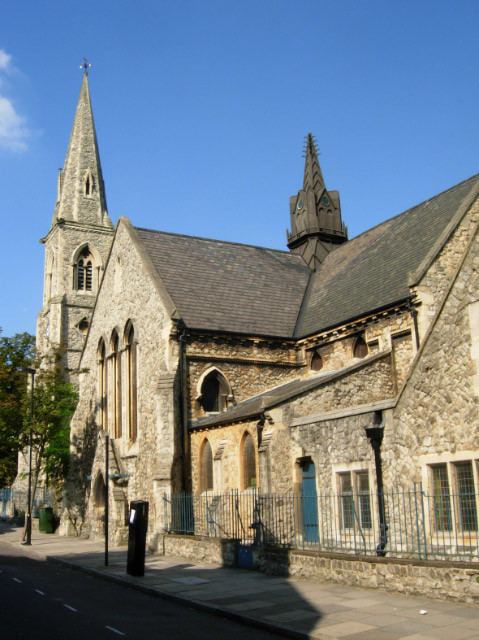Name Alexander Gough | Role Architect | |
 | ||
Structures | ||
Alexander Dick Gough (3 November 1804 – 8 September 1871) was an English architect who practised in London, where much of his work may be found. He was a pupil of Benjamin Dean Wyatt, and worked in partnership with Robert Lewis Roumieu between 1837 and 1848.
Contents
Life
Gough was born on 3 November 1804 at Somers Town in London, the son of Alexander and Mary Gough. In 1823, at the age of 19, after some foreign travel, he became a pupil of the architect Benjamin Dean Wyatt, who entrusted him with the superintendence of several of his most important works, including Apsley House and the Duke of York's Column.
In 1836 he set up in practice in partnership with another of Wyatt's pupils, Robert Lewis Roumieu. Between 1837 and 1847, the two men exhibited 14 architectural drawings at the Royal Academy, mostly of buildings they were in the course of erecting. Their works included the Islington Literary and Scientific Institution (1837–8 ), in a stripped Classical style, new schools and teachers' residence for St. Peter's, Islington (1839–40) and the neo-Tudor free church and schools in Paradise Street, St Pancras. They made additions to Charles Barry's Early English church of St. Peter, Islington, built Milner Square, Islington (1840–3) and rebuilt St Pancras Old Church in a Norman style (1847–48). The last of these projects was described in a contemporary report as being by "Mr Gough, of the firm of Gough and Roumieu". Nikolaus Pevsner attributed de Beauvoir Square, Hackney, to the partnership, although there is no documentary evidence for their involvement.
During 1845 Gough made surveys, partly on his own account and partly with Roumieu, for the Exeter, Dorchester, and Weymouth Junction Coast railway; for the Direct West-End and Croydon railway; and for the Dover, Deal, Sandwich, and Ramsgate Direct Coast railway. From 1846 to 1848 he made numerous surveys for compensation claims against other railway companies.
The partnership between Gough and Roumieu was dissolved in 1848. During the remainder of his career as an architect, Gough built a number of new churches, six of them on Islington. and extended or restored others. A contemporary review of his church of St Paul at Chatham, built in a neo-Norman style in 1853-5, noted that Gough had followed medieval models much more closely in the details than in the general form, and praised the building's areas of boldly-executed surface-carving. He also designed schools and executed private commissions.
Gough died on 8 September 1871, aged 67, and was buried in Highgate Cemetery. His son, Hugh Roumieu Gough, succeeded to his practice.
In partnership with R. L. Roumieu
Later works
Gough also reconstructed the interiors of St. Mary's, Brampton, Huntingdonshire; St. Nicholas's, Rochester (where he also built a parsonage) St. Giles's, Pitchcott, Buckinghamshire and St. Margaret's, Rainham, Kent. He built new chancels at St. Thomas's, Winchelsea, Sussex; and All Saints', Hastings.
